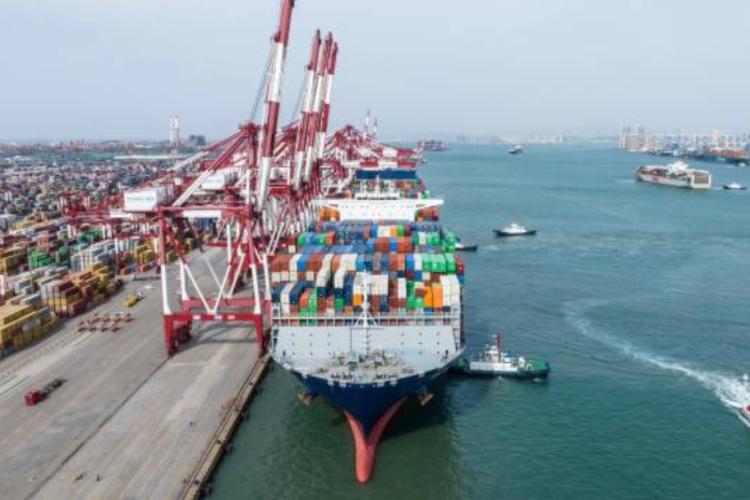
The Union Budget 2025 made strong commitments to sustainable development and economic self-reliance, with proposals spanning clean-tech manufacturing, water and energy resources. Among the most ambitious is the establishment of a Maritime Development Fund—a Rs 25,000 crore initiative aimed at revitalising India’s maritime sector, promoting domestic shipbuilding, and reducing reliance on foreign shipping services. Positioned as a cornerstone of the government’s vision for a self-reliant and environmentally responsible maritime economy, the fund has the potential to transform the sector—if implemented with foresight and rigour.
India’s participation in the global shipbuilding market remains negligible—just 0.06%. This underinvestment has long-term trade implications: in 2021-22 alone, India paid over $109 billion in sea freight charges to foreign operators. The MDF seeks to correct this imbalance by strengthening India’s maritime capabilities and increasing its global shipping tonnage share from the current 2% to 5% by 2030.
READ | Crypto reserves: India’s next step towards financial sovereignty
The fund, with an initial outlay of Rs 25,000 crore, is structured with 49% equity from the central government and 51% from major ports, financial institutions, sovereign funds, and private investors. By the end of the decade, the government hopes to crowd in Rs 1.5 lakh crore in investments and generate 9 to 11 lakh jobs in the shipping and allied sectors. These ambitious goals hinge on boosting port competitiveness, modernising shipyards, and facilitating access to capital for Indian shipping companies.
Maritime Development Fund
The MDF proposes a two-pronged strategy: addressing supply constraints via incentives under Shipbuilding Financial Assistance Policy (SBFAP) 2.0, and stimulating demand by aligning domestic shipbuilders with the requirements of major procurers such as the Indian Navy, public shipping firms, and oil companies. Additionally, funds will be channelled into upgrading port infrastructure and improving maritime logistics networks to enhance overall efficiency.
The initiative dovetails with the government’s push for Atmanirbhar Bharat—reducing foreign dependence, improving trade efficiency, and supporting the manufacturing ecosystem.
Green shipping on the agenda
A defining feature of the MDF is its emphasis on sustainability. The fund encourages adoption of green maritime technologies such as hybrid propulsion systems and alternative fuels, notably Liquefied Natural Gas (LNG). Projects that support decarbonisation and align with International Maritime Organisation (IMO) emission reduction targets will receive priority funding.
The government also proposes a Shipbreaking Credit Note Policy, offering 40% of the scrap value recycled at Indian facilities as credit toward purchasing new ships. This not only incentivises environmentally responsible scrapping, but also stimulates domestic demand for shipbuilding.
Further, the extension of the tonnage tax scheme under the Indian Vessels Act, 2021 is aimed at promoting inland water transport, which is widely considered the most environmentally friendly mode of freight.
Training and human capital development are also on the agenda, with promises of skill-building in areas such as automation, sustainable practices, and modern shipbuilding techniques.
Gaps between vision and ground reality
While the MDF’s goals are laudable, the sector’s capacity to absorb and implement these reforms is uncertain.
The biggest gap lies in LNG infrastructure. Currently, India has just one operational LNG bunkering facility, an obvious limitation for a strategy that hinges on cleaner fuels. Transitioning to LNG would require significant investments in port facilities, storage infrastructure, and skilled labour, none of which have a clear roadmap.
Moreover, shore power adoption—providing electricity to ships while docked—remains low due to cost concerns. India’s pace of building LNG infrastructure and green shipping capabilities has been glacial. Without strong state support, shipowners are unlikely to invest in green tech due to high upfront costs and low short-term returns. In contrast, countries like Japan and those in Europe have moved swiftly with government-financed incentives.
The earlier version of the Shipbuilding Financial Assistance Policy did increase domestic orders but failed to improve global competitiveness. Delays in financial disbursals, high levels of bureaucratic control, and a shortage of skilled labour hindered progress. The revamped SBFAP 2.0 must learn from these shortcomings or risk repeating history.
According to studies by Defence Research and Studies (DRaS) and the Department of Scientific and Industrial Research (DSIR), the Indian shipbuilding industry faces a significant skills deficit. Despite training centres like the Centre of Excellence in Maritime & Shipbuilding (CEMS), many workers lack even basic skills such as welding and fitting—let alone expertise in advanced maritime technologies.
The government’s projection of 9–11 lakh job creation is encouraging, but the training ecosystem needs to be overhauled to address both foundational skills and technological upskilling.
Marine biodiversity a blind spot
Although the MDF emphasises sustainability, one critical area has been overlooked: marine biodiversity conservation. Increased port activity and expanded shipping lanes could have adverse ecological consequences. A truly sustainable maritime development strategy must also allocate resources for habitat restoration, monitoring of marine life, and environmental impact assessments.
The Maritime Development Fund holds enormous promise as a strategic lever to boost India’s economic resilience, enhance global competitiveness, and promote environmental stewardship. But success will depend on sound execution, private sector participation, strong regulatory oversight, and infrastructure readiness—especially in green shipping.
The government must urgently ramp up support for LNG supply chains, shore power systems, and shipyard modernisation, while closing the skills gap and incorporating ecological safeguards.
If these challenges are addressed with urgency and foresight, the MDF could set India on a path to becoming a global leader in the sustainable blue economy.
(Dr Barun Kumar Thakur teaches economics at FLAME University, Pune. Uzer Usmani and Saathvi Kodali are students of the university.)
